UPSC Daily Current Affairs: 19th January 2025 | Current Affairs & Hindu Analysis: Daily, Weekly & Monthly PDF Download
GS3/Science and Technology
Mission SCOT: A Leap in Space Surveillance
Source: Money Control
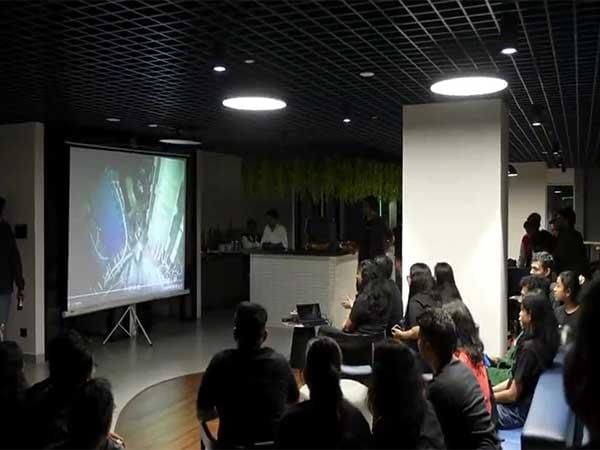 Why in News?
Why in News?
The Prime Minister recently praised the Indian space startup Digantara for the successful launch of Mission SCOT, which marks a significant advancement in the field of space surveillance.
- SCOT (Space Camera for Object Tracking) is Digantara's inaugural mission focused on space surveillance.
- It is recognized as one of the world's first commercial Space Situational Awareness (SSA) satellites.
- Launched aboard SpaceX’s Transporter-12 mission, SCOT will enhance tracking capabilities of space debris.
Additional Details
- Mission Objective: SCOT is designed to track Resident Space Objects (RSOs) with a focus on objects as small as 5 cm, ensuring safer space operations.
- Orbit and Capability: Deployed in a sun-synchronous orbit, SCOT will operate more efficiently than traditional sensors, which are often limited by field of view, weather, and geographic constraints.
- Support and Funding: The mission is backed by Aditya Birla Ventures and the Small Industries Development Bank of India (SIDBI), aiming to bolster national security and space operations.
- In addition to Digantara, two other Indian space startups deployed satellites on the same SpaceX mission, enhancing India's presence in the commercial space sector.
Mission SCOT represents a crucial step forward in India's capabilities in space surveillance, contributing to both national security and advancements in space technology.
GS2/Governance
Property Cards Distributed Under SVAMITVA
Source: Indian Express
Why in News?
Prime Minister Narendra Modi recently described the distribution of property cards under the Centre's SVAMITVA scheme as a "guarantee of economic security." During a video-conferenced event, he announced that over 65 lakh property cards have been distributed to owners in more than 50,000 villages across 230 districts. He emphasized that the nationwide implementation of this scheme could unlock economic activity worth over ₹100 lakh crore.
- SVAMITVA scheme aims to establish clear ownership of property in rural areas.
- Over 65 lakh property cards distributed, benefiting millions in rural India.
- Potential to unlock significant economic activity and improve financial stability.
Additional Details
- SVAMITVA: Stands for Survey of Villages and Mapping with Improvised Technology in Rural Areas. It is a Central Sector Scheme of the Ministry of Panchayati Raj, launched on National Panchayati Raj Day, April 24, 2021.
- Aim of the Scheme: To reform property ownership in rural areas through drone technology and by providing legal ownership cards (property cards/title deeds) to village households.
- Objectives:
- Create accurate land records for better rural planning and reduce property-related disputes.
- Facilitate financial stability by allowing citizens to use property as a financial asset.
- Enhance property tax collection for Gram Panchayats and state exchequers.
- Support the preparation of comprehensive Gram Panchayat Development Plans (GPDP) using GIS maps.
- Impact Areas:
- Promote an inclusive society by improving socio-economic standards.
- Address land governance issues and reduce conflicts over land ownership.
- Enhance sustainable habitats through better infrastructure planning.
- Boost economic growth by enabling property monetization and streamlining property tax.
- Economic Potential: The property cards are seen as a means to secure bank loans and address long-standing issues of illegal occupation, particularly benefiting marginalized communities.
- Status: Nearly 50% of India's 6 lakh villages have been surveyed using drones since the scheme's inception, leading to over 2.25 crore citizens receiving legal property documents.
- Global Context: A UN study indicated that lack of legal property rights limits economic potential. The SVAMITVA scheme aims to change this narrative.
- Technological Advancements: 23 crore Bhu-Aadhaar (ULPIN - unique land parcel identification number) issued, with approximately 98% of land records digitized.
The SVAMITVA scheme represents a significant step towards clearer property rights in rural India, enhancing economic security and providing a foundation for future growth and development.
GS3/Environment
Discovery of Two New Goby Fish Species in Coringa Wildlife Sanctuary
Source: Times of India
Why in News?
Researchers from the Zoological Survey of India (ZSI) have identified two new species of goby fishes, Hemigobius hoevenii and Mugilogobius tigrinus, in the Coringa Wildlife Sanctuary. This marks the first time these species have been recorded in Andhra Pradesh, making this discovery significant along the eastern coastline of India.
- The species Hemigobius hoevenii and Mugilogobius tigrinus are new records for Andhra Pradesh.
- These goby species are primarily found in estuarine regions, particularly around mangrove ecosystems.
- They have ecological importance as they serve as indicators of environmental health.
Additional Details
- Habitat: Most goby species thrive in estuarine areas, especially within mangrove forests, which are vital for their survival.
- Ecological Significance: Gobies play a crucial role in the food chain and can indicate the health of their environment. Among the 135 goby species along India's coasts, 95 are found in Indian mangroves.
- About Goby Fish: Gobies are generally small, carnivorous fish that inhabit various global waters, predominantly in tropical regions. They tend to be bottom-dwellers and feature a unique fused pelvic fin that forms a weak suction cup.
- Gobies significantly impact the benthic environment due to their bottom-dwelling nature and are considered keystone species in the freshwater ecosystems of small oceanic islands.
This discovery not only enriches the biodiversity of the region but also underscores the ecological significance of gobies in maintaining healthy marine and estuarine ecosystems.
GS1/Indian Society
Why Are Fertility Levels Declining in India?
Source: The Hindu
Why in News?
The decline in fertility levels in India is part of a broader global demographic trend highlighted in the Global Burden of Diseases, Injuries, and Risk Factors Study (GBD) 2021. This analysis points to a significant drop in India's Total Fertility Rate (TFR), which has decreased from 6.18 in the 1950s to 1.9 in 2021, falling below the replacement level of 2.1. Projections indicate that this rate could further decline to 1.04 by 2100, leading to considerable socio-economic implications.
- India's fertility rate has seen a dramatic decline over the decades.
- Several factors contribute to this decline, including increased female empowerment and changing societal norms.
- Regional disparities exist, particularly between southern states and the rest of the country.
- The implications of declining fertility rates encompass economic, social, and healthcare challenges.
Additional Details
- Increased Female Literacy and Workforce Participation: The empowerment of women through education and career opportunities has significantly impacted fertility rates.
- Changing Societal Attitudes: There is a trend towards late marriages and prioritizing financial independence, leading to a preference for smaller families.
- Infertility and Abortions: Rising infertility rates among couples and increased instances of abortion are contributing factors to declining fertility.
- Migration: Young individuals often migrate abroad for better opportunities, which affects family planning decisions.
- Urbanization: As families move to urban areas, they tend to have fewer children to align with modern economic aspirations.
- Regional Implications: Southern states like Kerala have achieved replacement-level fertility earlier, but face challenges such as an ageing population and a shrinking workforce.
- Global Context: Countries like South Korea illustrate the difficulties in reversing declining fertility trends despite significant pro-natalist policies.
The declining fertility rates in India indicate a significant demographic shift with long-term socio-economic consequences. Adapting to these changes will require proactive policies that address economic growth, healthcare, and social challenges. By learning from global experiences and focusing on sustainable development, India can effectively navigate the implications of these trends.
GS3/Science and Technology
What is Dark Oxygen?
Source: BBC
Why in News?
Scientists have recently uncovered a fascinating phenomenon known as Dark Oxygen, which involves the production of oxygen in the deep ocean, thousands of feet below the surface, without the need for light or photosynthesis. This discovery has prompted researchers to explore the deepest parts of Earth's oceans to further understand this process.
- Dark Oxygen is generated at great depths in the ocean.
- Oxygen production was previously thought to occur only through photosynthesis.
- The discovery challenges existing beliefs about how oxygen is produced underwater.
Additional Details
- Polymetallic Nodules: These are metal lumps resembling coal that release oxygen through electrochemical activity in the absence of light.
- These nodules are composed of various metals including manganese, iron, cobalt, nickel, copper, and lithium.
- The process involves the splitting of water molecules into hydrogen and oxygen, which is a significant departure from the traditional understanding of oxygen production.
This discovery of Dark Oxygen not only reshapes our understanding of oceanic ecosystems but also highlights the complex interactions between geological processes and biological systems. Further research into this phenomenon could reveal new insights into marine chemistry and the potential for life in extreme environments.
GS2/Governance
Internet Governance Internship and Capacity Building Scheme
Source: PIB
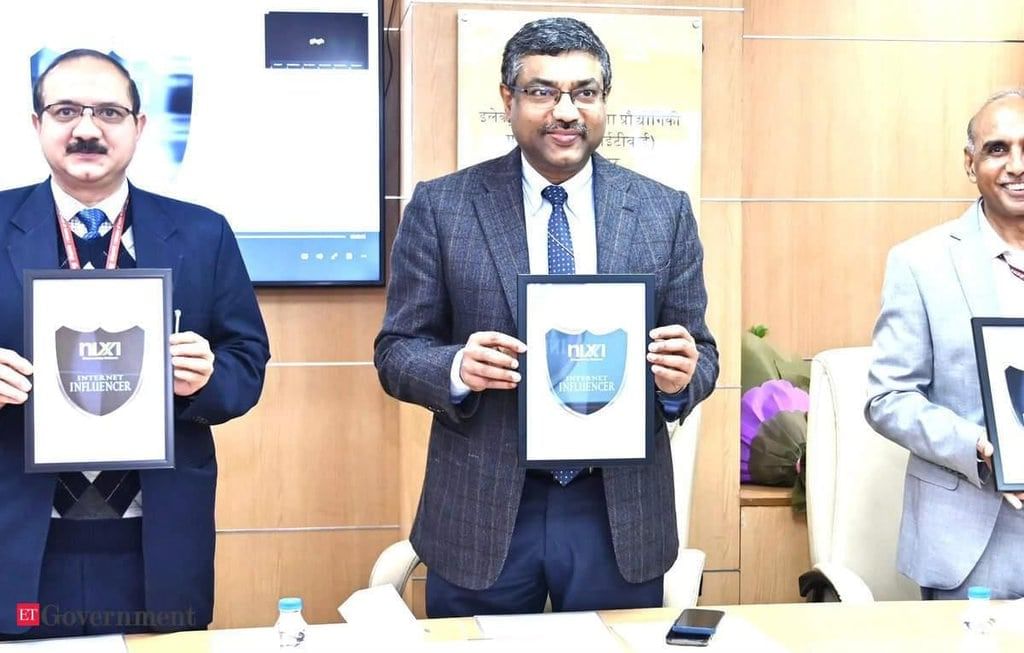 Why in News?
Why in News?
The National Internet Exchange of India (NIXI) has recently initiated the Internet Governance Internship and Capacity Building Scheme, aiming to enhance awareness and expertise in internet governance among Indian citizens.
- The scheme focuses on developing skills related to internet governance (IG).
- Participants will engage with global organizations such as ICANN, ISOC, IEEE, and IETF.
- The internship includes mentorship from experts in the field.
- Interns will receive a stipend and support for outreach activities.
Additional Details
- Internship Structure: The program offers two tracks: a six-month and a three-month internship, both providing substantial learning opportunities.
- Mentorship: Interns will be guided by experts from international organizations, retired government officials, and faculty from recognized institutions.
- Stipend: Each intern will receive a monthly stipend of ₹20,000, along with resources to conduct mandatory outreach programs.
- NIXI Overview: NIXI is a not-for-profit organization established in 2003 under the Ministry of Electronics and Information Technology, tasked with increasing internet adoption in India.
- NIXI provides several services, including Internet Exchange Points (IXPs) for building internet infrastructure, .IN Registry for digital identity, and IRINN for IPv4 and IPv6 address adoption.
This initiative is a significant step towards cultivating domestic talent capable of addressing and contributing solutions to emerging internet governance challenges.
GS3/Economy
Upper Karnali Hydro-electric Project
Source: MSN
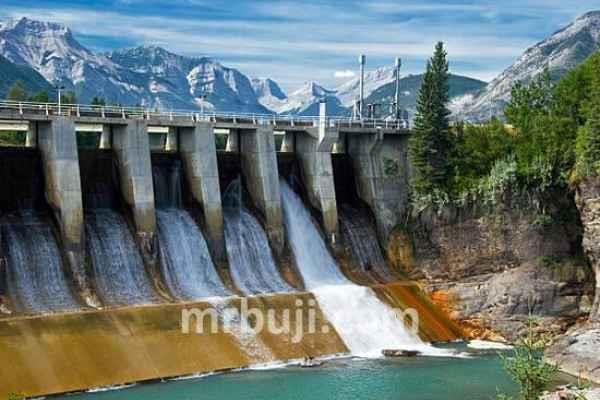 Why in News?
Why in News?
The Indian Renewable Energy Development Agency Ltd. (IREDA) has collaborated with SJVN Ltd., GMR Energy Ltd., and Nepal Electricity Authority (NEA) to establish the 900 MW Upper Karnali Hydro-electric Project in Nepal. This initiative is significant for enhancing energy generation and regional cooperation among Nepal, India, and Bangladesh.
- The project has a capacity of 900 MW and is classified as a run-of-the-river hydroelectric project.
- It aims to supply electricity to Nepal, India, and Bangladesh for a duration of 25 years.
- The development is led by GMR Upper Karnali Hydro Power Limited (GUKHL), a subsidiary of GMR Group India.
- The project is being executed on a build-own-operate-transfer (BOOT) basis.
- Current ownership is divided between GUKHL (73%) and NEA (27%).
Additional Details
- Electricity Generation: The project is projected to produce approximately 3,466 million units of electricity annually, while also reducing greenhouse gas emissions by around two million tons each year.
- Infrastructure Features: Key components include a concrete gravity dam, headrace tunnels, fish pass, feeder tunnels, surge and pressure shafts, and silt flushing tunnels.
- The hydroelectric facility will feature 8 turbines, each with a nameplate capacity of 112.5 MW.
- Timeline: Construction is anticipated to begin in 2027, with commercial operations projected to start by 2031.
The Upper Karnali Hydro-electric Project exemplifies a significant step towards sustainable energy development in the region, fostering economic growth and cooperation among neighboring countries.
GS2/International Relations
Exercise LA PEROUSE
Source: PIB
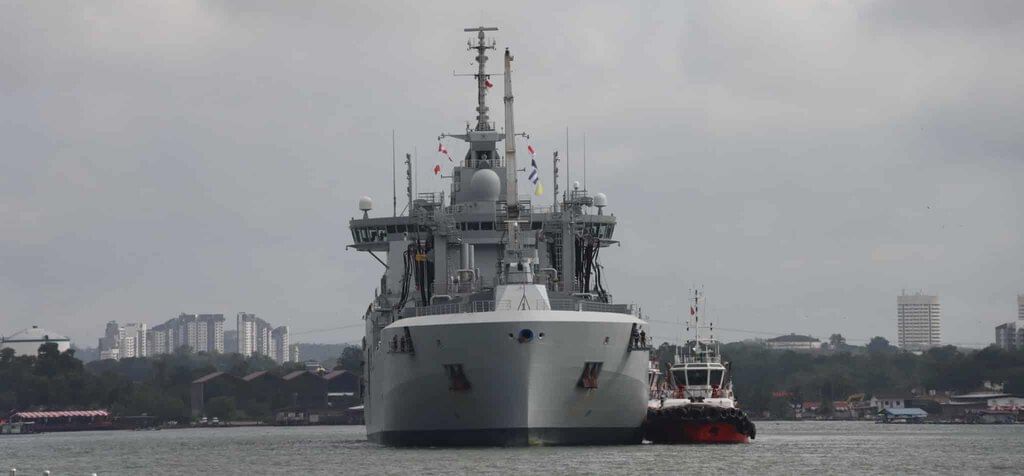 Why in News?
Why in News?
The indigenously designed and built guided missile destroyer INS Mumbai is currently participating in the Exercise LA PEROUSE, a significant multilateral maritime exercise taking place in the Indian Ocean Region.
- Multilateral Exercise: Exercise LA PEROUSE is a biennial event conducted by the French Navy.
- Participating Nations: This edition includes participation from various navies, enhancing international maritime cooperation.
- Focus Areas: The exercise aims to improve maritime situational awareness and conduct advanced multi-domain training.
Additional Details
- Participating Countries:This year's exercise features naval forces from multiple nations, including:
- Royal Australian Navy
- Royal Navy
- United States Navy
- Indonesian Navy
- Royal Malaysian Navy
- Republic of Singapore Navy
- Royal Canadian Navy
- Objectives:The primary goal of the exercise is to develop a common understanding of maritime challenges and enhance cooperation in:
- Maritime surveillance
- Maritime interdiction operations
- Air operations
- The exercise will feature complex scenarios such as surface warfare, anti-air warfare, air-defence, and tactical maneuvers, including constabulary missions like VBSS (Visit, Board, Search and Seizure).
- The Indian Navy's participation reflects strong synergy and interoperability with allied navies, showcasing a commitment to a rules-based international order in maritime affairs.
- This initiative aligns with India’s vision of SAGAR (Security and Growth for All in the Region), promoting enhanced maritime cooperation in the Indo-Pacific region.
In conclusion, the participation of INS Mumbai in Exercise LA PEROUSE underscores the Indian Navy's dedication to fostering collaborative relationships with other maritime forces, enhancing regional security and operational readiness.
GS3/Defence & Security
What is Trajan Gun?
Source: Economic Times
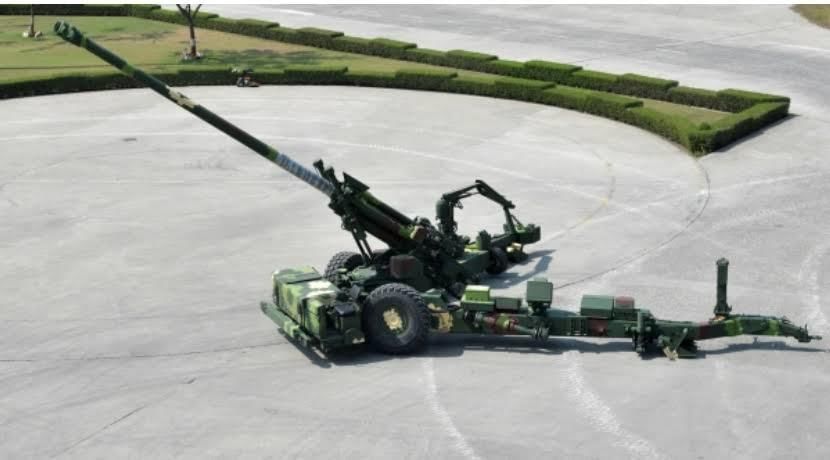 Why in News?
Why in News?
The Trajan 155 mm towed artillery gun system, developed in collaboration between India and France, has recently secured an export order from Armenia, highlighting its significance in modern military applications.
- The Trajan Gun is a 155 mm towed artillery system, co-developed by India (Larsen & Toubro) and France (KNDS).
- It features a range of over 40 kilometers, which varies depending on the type of ammunition used.
- Its modular design facilitates easy transportation and deployment across different terrains.
Additional Details
- Modular Design: The Trajan Gun's modular architecture allows for efficient logistics and adaptability in various environments, making it suitable for operations from marshy lowlands to high-altitude cold deserts.
- Automated Loading System: This feature enhances the firing rate, enabling the artillery to respond swiftly in combat situations.
- Advanced Targeting Systems: The artillery system is equipped with sophisticated targeting and fire-control technologies, which integrate seamlessly with contemporary military networks, ensuring precision and effectiveness.
The introduction of the Trajan Gun into the military arsenal signifies a step forward in modern artillery capabilities, combining advanced technology with practical design for diverse combat scenarios.
GS3/Economy
RBI's New Strategy on Rupee Depreciation
Source: Indian Express
Why in News?
The Reserve Bank of India (RBI) has recently shifted its approach towards the rupee, allowing it to depreciate against the US dollar over the past month. This change signifies a move away from the previous strategy of tightly managing the rupee to prevent sharp declines, a stance that was in place until late 2024.
- The rupee hit a historic low of 86.70 per dollar on January 13, 2025, marking a significant drop.
- Since November 1, 2024, the rupee has depreciated by 2.6%.
- The RBI's reduced intervention signals a tolerance for depreciation, aligning with market forces.
- Analysts are cautious about attributing this change solely to the new RBI Governor, Sanjay Malhotra.
Additional Details
- Significant Depreciation: The rupee's recent decline is notable, having reached its lowest point in two years, suggesting a recalibration of the RBI's intervention strategy.
- Impact on Forex Reserves: India's foreign exchange reserves have fallen by $79 billion since September 2024, now standing at $625.87 billion as of January 10, 2025, primarily due to dollar sales and foreign investor withdrawals.
- Market Liquidity Deficit: A persistent liquidity deficit has emerged despite RBI efforts to inject cash into the system through measures like CRR cuts and bond purchases.
- Inflationary Concerns: The depreciation of the rupee could contribute to higher imported inflation, particularly for oil, which is projected to increase inflationary pressures to 4.5% for Q4 FY24.
- Future Trajectory: The rupee's future will largely depend on the strength of the US dollar, influenced by potential policy shifts during Donald Trump’s presidency.
- Analysts predict that the rupee may further depreciate to around 87 per dollar by March 2025, depending on global market conditions.
In conclusion, the RBI's new stance on the rupee reflects a strategic adjustment aimed at balancing market stability with resource conservation. While the long-term effects of this strategy remain uncertain, it may facilitate better alignment with global currency trends and address domestic liquidity challenges.
GS3/Environment
The Trouble with Disposing Bhopal's Union Carbon Waste
Source: The Hindu
Why in News?
On January 2, 2025, authorities in Madhya Pradesh moved 358 tonnes of hazardous waste from the abandoned Union Carbide facility in Bhopal to the Pithampur industrial area in Dhar district. This relocation followed a directive from the Madhya Pradesh High Court, issued on December 3, 2024, which mandated the disposal of the waste within a four-week timeframe, nearly four decades after the Bhopal gas tragedy that resulted in over 4,000 deaths and numerous injuries.
- The relocation of hazardous waste is a response to a long-standing environmental issue stemming from the Bhopal gas disaster.
- The waste disposal efforts face challenges such as local protests and health concerns regarding incineration methods.
- The Madhya Pradesh High Court has intervened to ensure safe disposal methods are employed within a stipulated timeline.
Additional Details
- Background: The Bhopal gas tragedy, one of the most catastrophic industrial accidents, occurred on December 2-3, 1984, when methyl isocyanate (MIC) leaked from a pesticide plant, exposing over 500,000 residents to toxic fumes, leading to both immediate and long-term health issues.
- Current Status: The hazardous waste consists of fertilizer components that have remained untreated for decades. The Madhya Pradesh government plans to incinerate 377 tonnes of this waste at a treatment, storage, and disposal facility (TSDF) in Pithampur.
- Challenges: Local protests have delayed the disposal process due to fears of harmful emissions from the proposed incineration.
- High Court Intervention: The High Court has mandated the state government to complete the waste disposal within six weeks while ensuring public awareness of the methods being utilized.
- Environmental Risks: Concerns about water quality and health impacts have been raised, although reports from health institutions indicate lower rates of skin and respiratory diseases compared to national averages.
In conclusion, the ongoing efforts to dispose of the hazardous waste from the Union Carbide facility highlight the complex interplay of environmental management, public health, and legal oversight in addressing the aftermath of one of the worst industrial disasters in history. The next hearing by the High Court is set for February 18, 2025, to assess the progress and determine further actions.
|
59 videos|5388 docs|1140 tests
|
FAQs on UPSC Daily Current Affairs: 19th January 2025 - Current Affairs & Hindu Analysis: Daily, Weekly & Monthly
| 1. What is Mission SCOT and its significance in space surveillance? |  |
| 2. How does the SVAMITVA scheme benefit rural areas in India? |  |
| 3. What are the newly discovered goby fish species in Coringa Wildlife Sanctuary, and why are they important? |  |
| 4. What factors are contributing to the decline in fertility levels in India? |  |
| 5. What is Dark Oxygen and its relevance in astronomical research? |  |
















